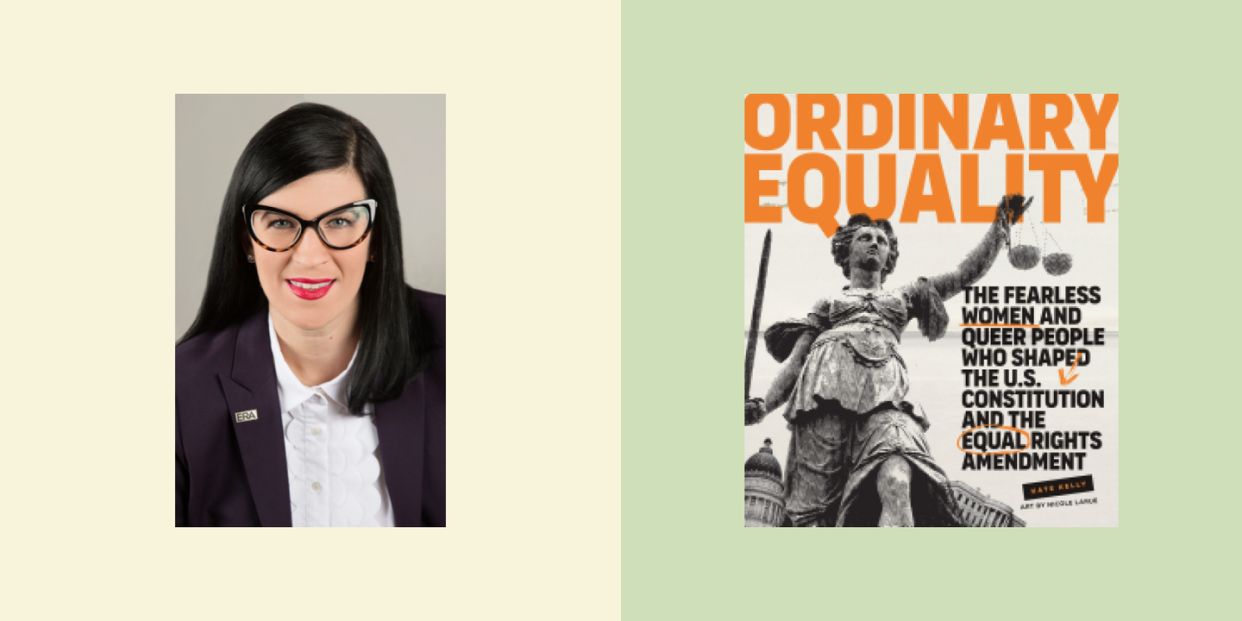Kate Kelly’s “Ordinary Equality” Shows Us How Vital It Is That We Finally Pass the ERA

- Oops!Something went wrong.Please try again later.
The Supreme Court has overturned Roe v. Wade, and the Senate has killed the Women's Healthcare Protection Act. In other words, the future of American gender equality looks bleak. In such a dystopian time, Kate Kelly’s Ordinary Equality serves as a beacon of hope and optimism. The volume introduces readers to gender equality activists past and present who are constitutional changemakers. More importantly, Ordinary Equality is accessible to audiences of diverse backgrounds, ages, and varied levels of familiarity with American political history. It smartly breaks down complex legal, political, and historical concepts through sparkling text and thought-provoking illustrations by Nicole LaRue. Kelly aims to spark a youth feminist revolution, and, trust me, Ordinary Equality lights that fire.
Although the ERA was historically a bipartisan effort, in recent decades the Republican party has systematically built opposition to it and today continues to block its ratification. But Kelly is raising her voice to reignite passions around the amendment by educating us on all who came before, trying to get the ERA passed.
The author's personal history proves her to be someone who is unafraid to fight for what she believes in. She hails from a conservative Mormon family and was even convicted of apostasy and excommunicated from the church. Early in Ordinary Equality, Kelly credits Sonia Johnson, a formerly devout, now also excommunicated Mormon, with inspiring her to join the ERA movement. Throughout the book, she connects the dots between brave feminist patriots from many decades, bringing to life the idea not only that one person can make a difference but also that mentorship is something women have been really good at.
Also, Johnson's story as well as Kelly's own drives home the fact that anti-gender equality arguments frequently masquerade as theology. Case in point: Congresswoman Vicky Hartzler, who's declared that aborted fetuses “were human beings with a purpose from our Creator.… American people still believe in the God-given dignity of every person, born or unborn.”
The quest to ratify the ERA is frequently dismissed as a white woman’s movement, a relic of second-wave feminism. Taking those optics into account, Kelly masterfully crafts Ordinary Equality as a work of intersectional feminism, highlighting the range of important ERA activists of varying ethnicities and genders, and activists' work to enable Black, brown, and Indigenous people, and to embrace the rights of trans and nonbinary individuals.
My favorite chapter of the book uplifts the work of Pauli Murray, an African American who was assigned female at birth, although Murray described themself as a “He/She personality.” Murray went on to cofound the National Organization for Women, the architect of what Thurgood Marshall called the model for civil rights leaders. Murray also became the first Black woman in the U.S. to be ordained an Episcopal priest. Kelly details how Murray understood the interconnectedness of all marginalized identities, as they were a minority among minorities: interracial, lesbian, genderqueer.
Within Ordinary Equality, Kelly ensures the women mentioned in the book are three-dimensional, and not cardboard cutouts in a dry work of history. She purposely refers to the activists by their first names so the reader will develop a personal connection with them, and in turn, the ERA movement itself, and humanizes them in other ways, for example, detailing personal passions and character traits of her heroines. Quotes from the women she portrays are sprinkled throughout so we can feel the discrimination they faced and the battles they fought. Kelly also includes a carefully curated of various ERA advocacy organizations, and particularly encourages students to join Generation Ratify, the youth-led movement supporting ratification of the ERA. Kelly demands readers “add [their] name to the distinguished list” of ERA activists, ensuring that the torch of the ERA movement will be carried forward.
Kelly’s words inform and ignite readers, and LaRue’s illustrations quite literally offer a road map to amending the U.S. Constitution, breaking down the ERA movement and the processes around it so that anyone can read through the legal jargon. It's an ingenious combination of words and art.
Kate Kelly: Thank you for your advocacy and for passing on these essential stories that inspire us to persist, to vote, to act.
You Might Also Like

